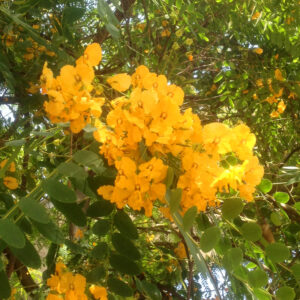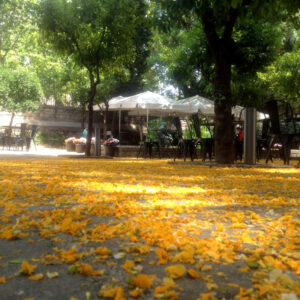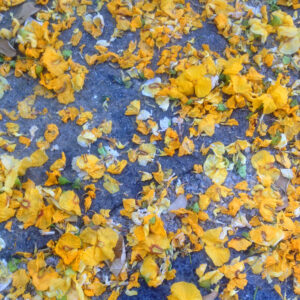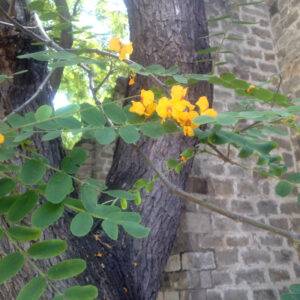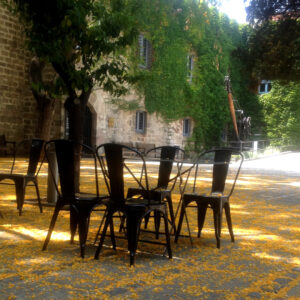Recently, someone in a group on Facebook asked me what kind of trees are now flowering in yellow flowers? I said it was tipuana tipu or just tipa. And then I remembered that I had long wanted to write a note about this tree.
Tipuana tipu, also known as tipa, rosewood and pride of Bolivia, is a South American tree. It was brought to Barcelona in the early 20th century. Tipuana in appearance resembles acacia, so many mistakenly consider this tree a yellow acacia. Sometimes is used the name “yellow jacaranda,” which is also not correct from a scientific point of view. It is possible that tipuana is compared with jacaranda because of the coincidence of the time of flowering.
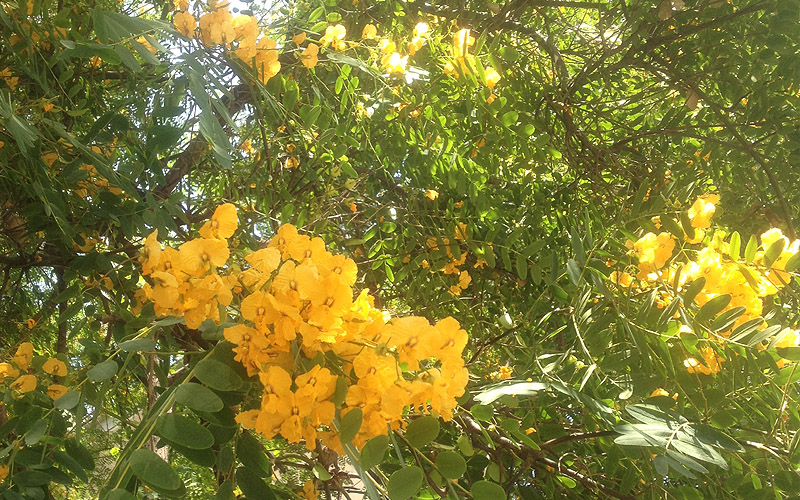
It is now one of the most common decorative trees in Barcelona. It blooms at the end of spring. It should be noted that spring in Spain lasts until June 22. Flowers, falling, saffron carpets lie on the sidewalks around the city, creating a magical mood.
The Bolivian Indians called these trees “tipa”. And on the basis of this word, George Bentham in 1853 formed the genus and species name of this tree, tipuana tipu. In Spanish, this tree has several names: tipuana, tipa blanca – white tipa; palo rosa – pink tree; orgullo de Bolivia – the pride of Bolivia.
The flowers of the tipuana are moth-like, the petals are wide opened round, collected in rare brushes. The seeds resemble the wings of the claw, but they are not coupled, but single. The seed is round, quite large and solid, when it falls under the legs it is immediately felt.
Tipuana is very unpretentious and grows on any type of soil. Therefore, they began to actively use it to strengthen slopes, combat winds and for landscaping. From Argentina and Bolivia, tipuana spread to Brazil and Uruguay, and was later brought to North America and Europe. They try to plant tipuana on wide streets, away from houses, because its powerful roots can easily lift asphalt and concrete.
Tipuana wood is not very durable, but it is easy to process. Tipuana leaves can serve as livestock feed, and a decoction of its leaves helps with bronchitis and colds.
One of the tipuana’s names, palo rosa, refers to the reddish color of its sap, which produces an unusual pink resin. It is used for treatment; this resin has hemostatic, anti-inflammatory and wound-healing properties.
Tipuans grow in abundance near my house and I always look forward to their flowering time. It’s a very special feeling to walk on the golden carpet of petals. And my photographs show the courtyard of the Maritime museum, where huge old tipuans grow. When in bloom, this yard turns into a jewel box. This is one of my favorite places in Barcelona.

